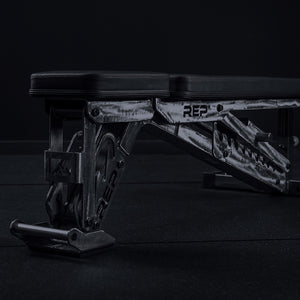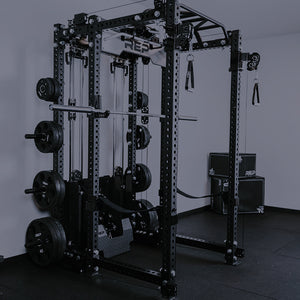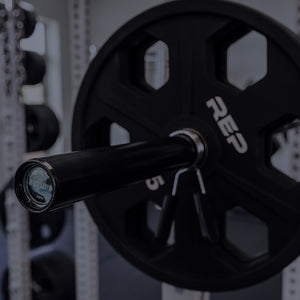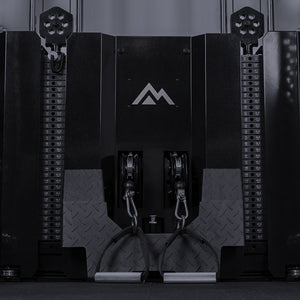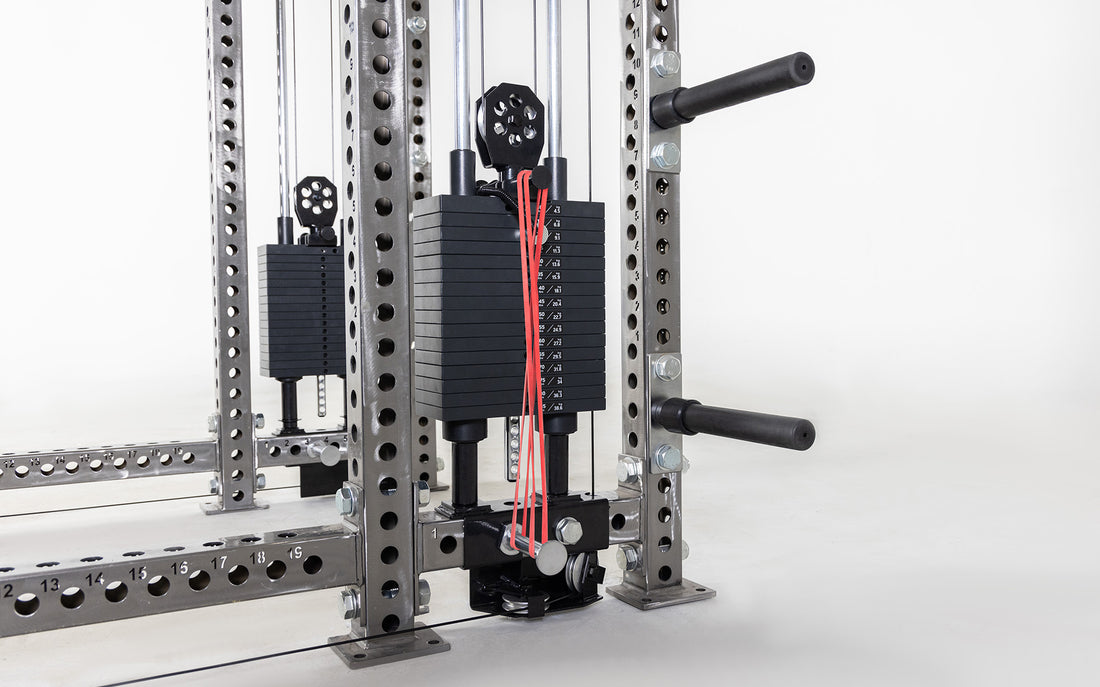
If you know, you know. But if you don’t, it might be easy to pass over these small, steel rack attachments.
Band pegs are bangin’.
These attachments are inexpensive, take up barely any space, and can enhance your gym on multiple levels – for organization and training. Here’s a closer look at band pegs and why you might want to add them to your gym.
What are Band Pegs?
Band pegs are small, steel pegs that you can slide into the upright or crossmember holes on your power rack and hook things onto. They typically have one long, straight end that you can slide through the upright/crossmember and another end, either round or shaped like a “T.” Essentially, they provide movable, easy-to-install, easy-to-add attachment points to your power rack.
Different Kinds of Band Pegs
Although they all serve the same purpose, you can find various styles of band pegs. REP offers two versions.

Standard Band Pegs are the OG design. They’re chrome-plated and solid steel. Simply slide the peg into the upright hole and it’s ready for use. These are made secure by their T-shaped design. One side of the “T” locks the peg into place; no pin needed. You attach or hang things onto the other long, straight side.
Band Pegs are 12” long on the shaft and 4 inches on the head. They can be inserted into the rack along the entire length of the shaft.
These pegs come in a set of four and are compatible with the PR-4000, PR-5000, SR-4000, Omni, and Apollo™ racks. They are durable, yet lightweight, weighing just over 1lb each. The length and diameter varies depending on which series you select.

Band Pegs 2.0 are a newer design. They’re also chrome-plated, solid steel, easy to install, and serve the same function. However, these pegs are secured with a cotter pin, so they’re extra locked in. And instead of a “T” shaped attachment end, these feature a round end. You hang or attach things to the round end of these.
The 2.0s are a bit heavier, at 1.8lbs per pair for the 4000 Series and 4.6lbs per pair for the 5000 Series. They also are shorter than the original design, measuring 8.5” end to end. The flat washer welded to the end is 3 3/8” from the bottom end, allowing 4.5” of usable space.
The Band Pegs 2.0 work with the PR-4000, PR-5000, Omni, and Apollo™ racks, too. And these are sold as a pair instead of in a set of four.
Why Add Band Pegs to Your Home Gym?
TLDR: Band pegs add versatility to your home gym.
The easiest use is as storage for bands, jump ropes, chains, and bands on your power rack.
But to get the most out of them, use band pegs as attachment points for resistance bands. Attach bands to your rack for warm-ups, mobility work, accessory work, band pulls/presses, and recovery.
You can also use resistance bands with functional trainers and weight stacks, as well as barbells to train dynamically and create a variable load. Bands on the barbell change the resistance throughout the range of motion. Where the band is looser, there is less resistance, and where it’s tighter, there is increased challenge. Exactly which part of the lift this occurs at depends on the lift itself, as well as where you place the band pegs and attach the bands.

You can attach bands at the top of the rack or the bottom. Most frequently, lifters attach bands to the bottom, making the top part of the lift more difficult. Most people are stronger at the top of the lift than at the bottom of the lift, so this allows you to work your natural strength curve.
This is most commonly used as another way to train the squat, bench press, and deadlift. For example, if you use bands with a squat (affixing the band pegs low on the uprights), the weight will progressively feel heavier as you stand up and lighter at the bottom of the squat. Banded bench presses are another example.
With deadlifts, the band is typically affixed on low band pegs, making the lockout the most difficult when using the band. Take it off and it can translate to more bar speed through the top end of the exercise – and better lockouts. Bands can also help keep your lats engaged throughout the lift.
When you add resistance bands to your compound movements, it can also:
- Help you move past strength plateaus and weak spots in the lift.
- Help you build more strength.
- Help you train explosiveness.
- Promote good form and cue you to keep a proper bar path.
- Keep your training novel and fun.
Bands also cause the weight to come down faster than just gravity alone; they’re always pulling the bar down. This creates a different stimulus than adding chains to your barbell.
How to use Band Pegs?
Band pegs are easy to install, but they require some finesse to set up.

Pick the right bands. Look for longer, looped resistance bands (i.e. Pull-Up Bands), not ones with handles or short, thick bands (hip circles). Pick a thickness/resistance based on your strength and goals. You might want to get the full set to experiment with what’s right for you. Start light until you’re comfortable and progress from there. REP’s Pull-Up Bands are marked with their resistance to help you select the right difficulty.
Attach the bands. There are several ways to attach bands to the pegs and the barbell.
You can use one band peg on each side and simply loop the band directly around the barbell collar and the band peg. But if you’re not tall enough or doing a lift closer to the ground, like bench press, this probably won’t create enough resistance.

That’s when you might want to try doubling up the bands. There are several ways to double them up.
- Affix both ends of the band to one peg and loop the middle around the barbell sleeves.
- Space two band pegs (about 6” apart), loop one end of the band on each peg, and the middle of the band over the bar. This creates a triangle with the band (see photo above). This can create a smoother experience and more resistance.
- “Choke” the band around itself. Wrap the band around two pins, loop the band through itself, and pull the free end up to affix to the barbell. You can spread the pins farther apart to make it tighter.
- You can also use multiple bands, if you're a super strong lifter.
Position the band pegs/bands properly. Make sure the bands are directly in the bar path. You don’t want the bands pulling you out of position.
So, for banded barbell exercises, the band pegs will slide into the very bottom upright on the floor lined up with your bar path – you don’t want them on the uprights. With bench, they should line up below your shoulder joint.
Practice before loading. Because the band creates resistance, you’ll want to use less weight on the bar than you’re to. You might want to start with an empty barbell and the lightest band. Be careful walking out with your weight the first time; it can feel wonky.
Note: One tip with REP’s original Band Pegs: Make sure the bands are pulled straight up and down. If lateral movement occurs, the bands aren’t straight.

NEWSLETTER SIGNUP
Product launch information, promotions, blogs, and REP news.

